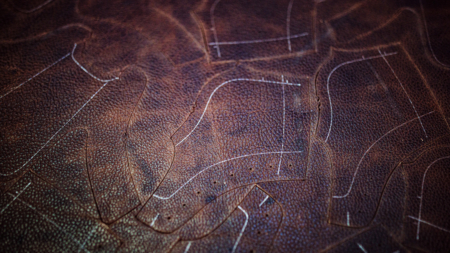Bison Hide
Two Patagonia styles this season use bison hide. Grazing bison help restore prairie ecosystems, whereas grazing cattle can damage native grasses.
Sixty million strong, they moved across the prairie—snuffing, grunting, aerating the soil with their hooves and grazing the tops of perennial grasses without disturbing the roots. The bison was one of the few megafauna to survive the extreme temperature fluctuations and shifting biomes of the late Pleistocene. As they roamed into the Holocene, they’d already adapted to the hot summers and freezing winters of North America’s Great Plains with thicker hides than other Bovidae (think: domestic cattle).
Humans have long recognized the merits of using bison hide as a material—up to an inch of subdermal collagen fibers translates to a stronger, thicker, more durable, and elastic leather than traditional cowhide. A single, newly harvested bison hide weighs 150 pounds and yields as much as 30 square feet of leather.
Aesthetically, bison hides have a highly pronounced and differentiated grain; the thicker and more widely spaced fibers give each hide a unique “marbled” or “road map” look. These qualities of the hide also make bison leather more breathable. To preserve this patterning, bison hides are not stretched as much as cowhides (which also helps maintain thickness and strength). Though bison leather feels broken in from day one, it becomes more supple over time without losing shape.
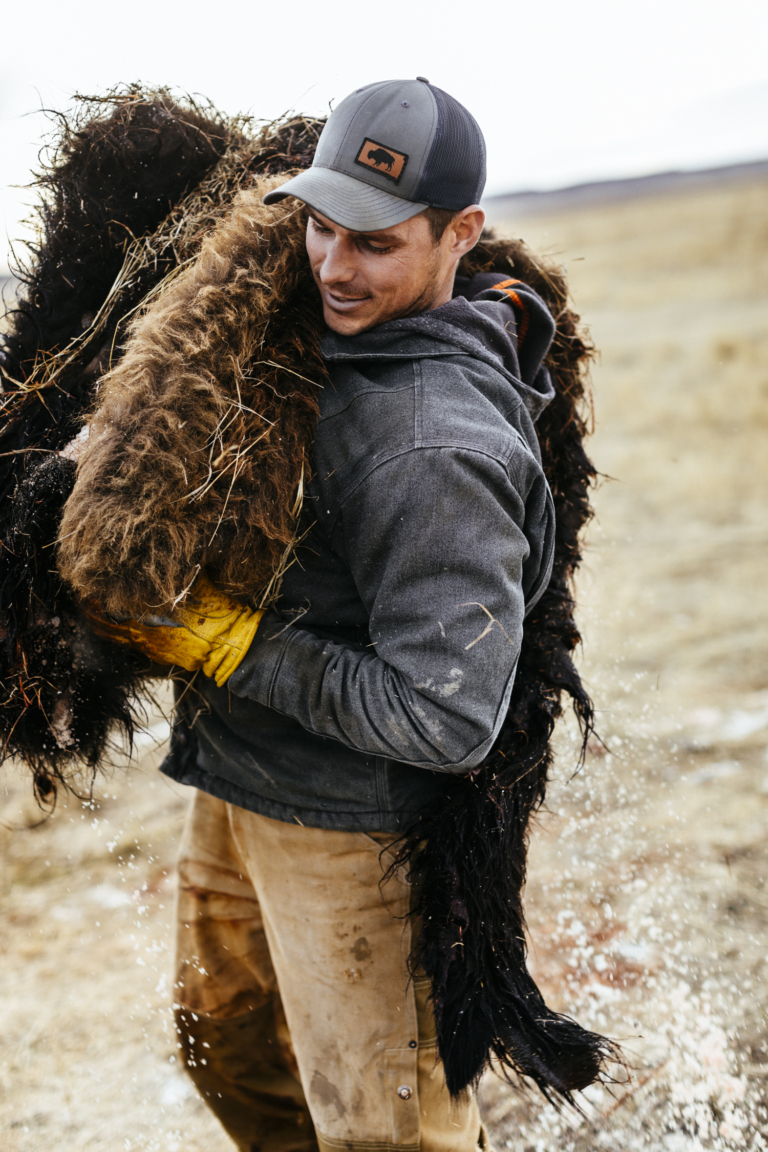
ASSIGNMENT / Wild Idea Ranch, South Dakota, March 2020
To source the leather for Patagonia’s first-ever Workwear boots it made use-the-whole-animal sense to turn to the same supplier we use for our Patagonia Provisions® Buffalo Jerky: Wild Idea Buffalo Co. in South Dakota. Their mission is to restore the prairie ecosystem of the Great Plains by reintroducing and increasing the herd size of its native herbivore, beginning with a combined 150,000 acres of grassland owned by Wild Idea and other affiliated ranchers.
As it turned out, those 60 million bison were no match for European settlers, who reduced their numbers to under 1,000 in order to open up the Plains for agriculture and to drive out the Indigenous people who depended on every part of the animal for their survival. Those industrial agricultural practices ravaged the prairie ecosystem. Reintroducing the bison plays a vital role in restoring it. The bison’s unique foraging methods keep soil and root systems in place, where the native grasses can capture carbon out of the air and put it back in the ground, which can also help mitigate the climate crisis.
“The more bison product we sell,” says Wild Idea ranch manager Colton Jones, “the more land we can place under our stewardship,” which means more prairie grasses, more topsoil and less carbon in the atmosphere.
Using bison hides to save the bison might seem counterintuitive, but their numbers are growing, and their cycle of life has been essential to the prairie’s vitality for ages.
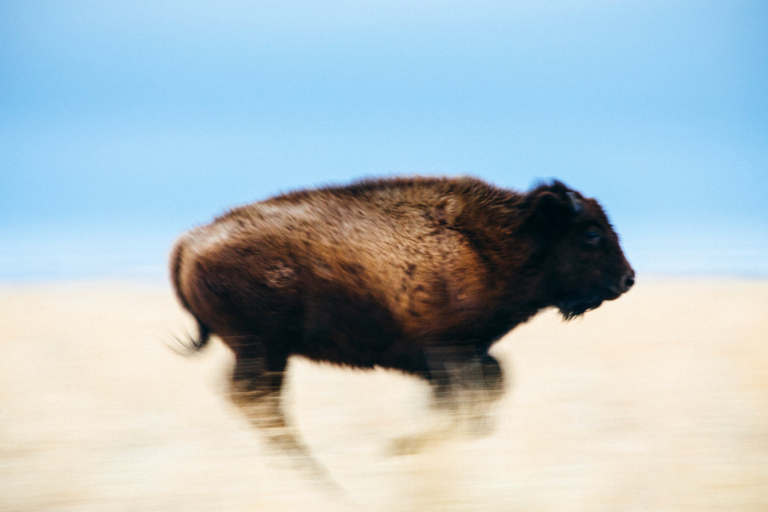
ASSIGNMENT / Wild Idea Ranch, South Dakota, March 2020
Nothing to Hide
Read more about Wild Idea’s mission to regenerate the prairie.
At age 27, Dan O’Brien was a South Dakota cattle rancher with a passion for falconry and the big empty. It didn’t take long for him to realize that free-ranging bison were better for the planet than nonnative cattle raised in feedlots. They were somewhat better for profit margins, too, and offered a much healthier and tastier alternative to hormone-injected beef. He founded Wild Idea Buffalo Co. to bring his product to market in the most environmentally responsible and humane way possible. Today, his Cheyenne River Buffalo Ranch abuts the Buffalo Gap National Grassland, and Wild Idea has had partnerships with a handful of other bison outfits, including those owned by the Yankton Sioux Tribe, David Letterman and Ted Turner.
By allowing his animals to roam freely, O’Brien has created a model for responsible ranching—one that works from the soil up. A day in the life at Wild Idea confirms this: The bison graze lightly and wallow in tight herds, hitting a section of the prairie and quickly moving on without depleting the grassland. In the herd’s wake, native root systems are left intact and can keep growing deeper, which keeps soil in place where it can store the carbon that the plants pull out of the atmosphere. On the product side: After a sage blessing, the bison are humanely harvested in the fields, and their nutritious, lean meat is shipped to customers around the country, while their quality hides are set aside to be made into Patagonia’s Wild Idea work boots.
On any given morning, O’Brien can gaze out upon an unbroken expanse of the Great Plains and take satisfaction from seeing that his herd has grown to 1,000 head (he started with 10), the native grasses are returning, and his family is thriving as a result of their good labor. But it’s what he can’t see that might be the most important thing for the future of life on this planet: The topsoil is regenerating, acre by acre.
The falconry is pretty good, too.

ASSIGNMENT / Wild Idea Ranch, South Dakota, March 2020
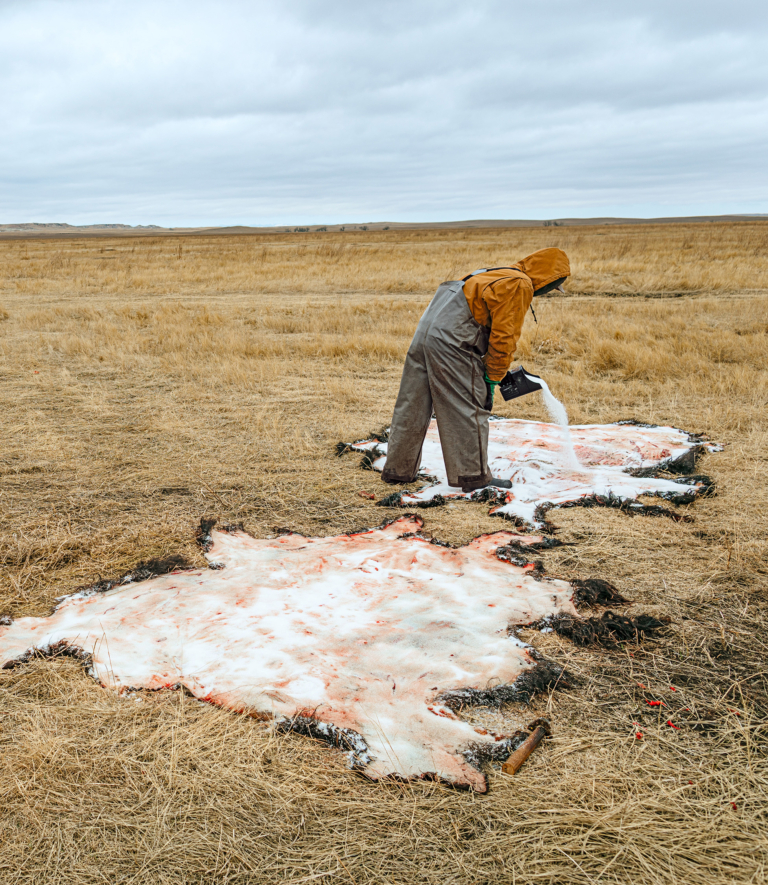
Copyright forest woodward
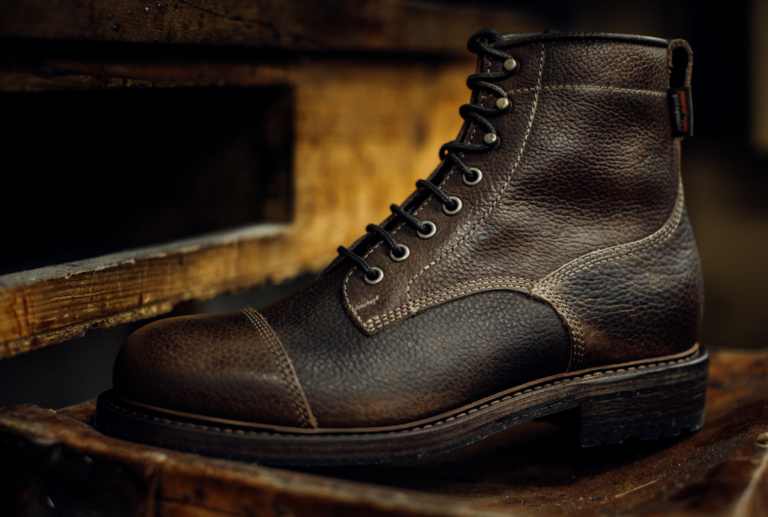
ASSIGNMENT / Portugal Boot Factory, March 2020
